10 Tips to Encourage Love of Literacy
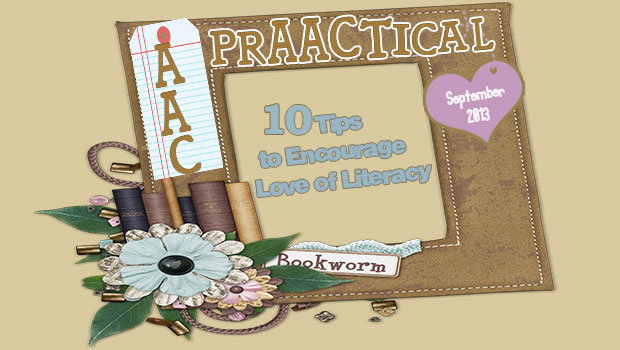
 Reading and writing are modalities of language (just like listening & talking). The more we integrate literacy into language learning the more opportunities for prAACtice and learning. Think of all the ways to prAACtice core words with reading and writing (e.g., “read again”, “write about that”, “that is good”, “He was bad”, “tell me more”, “I know”, etc…). With this in mind, we love encouraging a love of literacy for ALL of our students. Here are some top tips we have learned from the most reluctant reader/writers, to beginning reader/writers, to even the more proficient readers/writers. It is such a great pleasure to watch students begin to love literacy as much as we do.
Reading and writing are modalities of language (just like listening & talking). The more we integrate literacy into language learning the more opportunities for prAACtice and learning. Think of all the ways to prAACtice core words with reading and writing (e.g., “read again”, “write about that”, “that is good”, “He was bad”, “tell me more”, “I know”, etc…). With this in mind, we love encouraging a love of literacy for ALL of our students. Here are some top tips we have learned from the most reluctant reader/writers, to beginning reader/writers, to even the more proficient readers/writers. It is such a great pleasure to watch students begin to love literacy as much as we do.
- Use high interest books– Find books with super high interest pictures and/or text. For some learners, it helps to create your own books with personal interest photos and/or topics. One (very) reluctant reader we know, loved balls (& didn’t seem to like anything else) so we created books especially for him called- “Balls Everwhere”, “Animals Play Balls”, “Balls Bounce Everywhere”.
- Let the reader choose the book even if…they request the same book …over and over… and over or they choose a book you may not prefer.
- Create a reading routine- Set up a routine. Routines may put reading between two other more desired activities, involve a beginning and ending song, use specific time frames (after snack time, at bedtime, during arrival, etc.), or be anything that works for the class, session, or home.
- Create a preferred literacy area- Make a comfortable special reading and writing area. They can be the same or different areas.
- Start with short easy exposures- If you have a reluctant reader or writer begin with short books or writing tasks. Expand slowly as appropriate. At the beginning, the student may just hold the book or turn pages. Later, you will be amazed at how complex you can go. Use reading and writing software or programs that assist all levels of literacy (e.g., Don Johnston Assistive Technology, Abilipad, Crick Software, to name just a few).
- Build a book shelf- Not literally but leave books on a shelf or in a container that are at levels just below, just at, and just above the student’s reading level. You will be surprised what they choose at times.
- Plan literacy reinforcement- Treat the student as a reader and writer. If they point to words as you read- reinforce by saying “great reading” or “wow, you are a reader”. Any writing (e.g., notes, letter stamps, stories) can be reinforced with “great writing” or “wow, you are an author”.
- Be dramatic- Choose books that are funny or serious but be dramatic, create interest. Write funny notes, read funny books. Make literacy more than a chore or frustration.
- Read and Write Aloud-Read aloud to all levels and ages of readers. Write down important things that have meaning, humor, or communication. Check out the Read Aloud Handbook Seventh Edition by Jim Trelease
- Have Fun!– Focus on interaction and meaning before drilling on letters, phonics, etc.
Filed under: PrAACtical Thinking
Tagged With: literacy
This post was written by Robin Parker



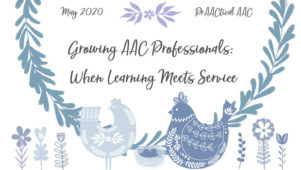
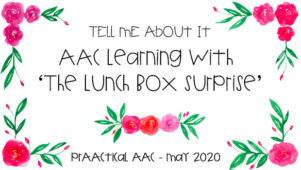
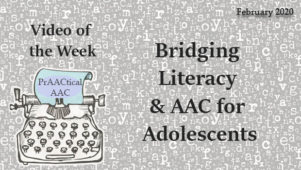
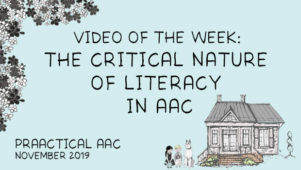
1 Comment
Saludos,desde Colombia,Cucuta,felicitaciones bien sincronizada la pagina web